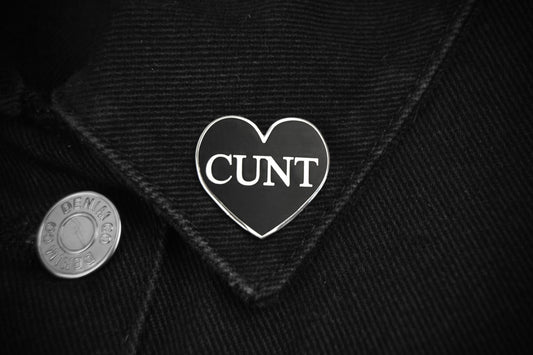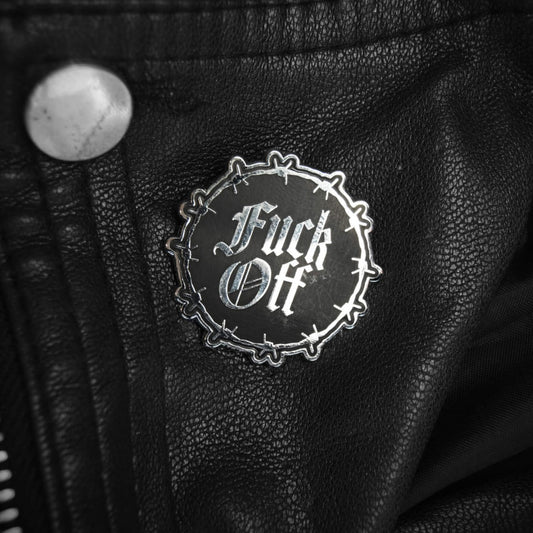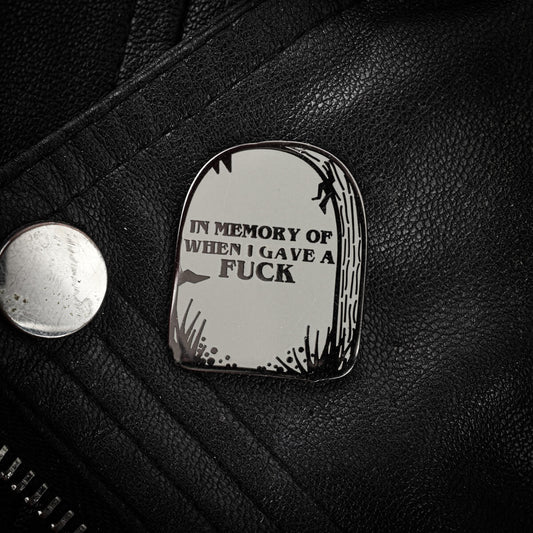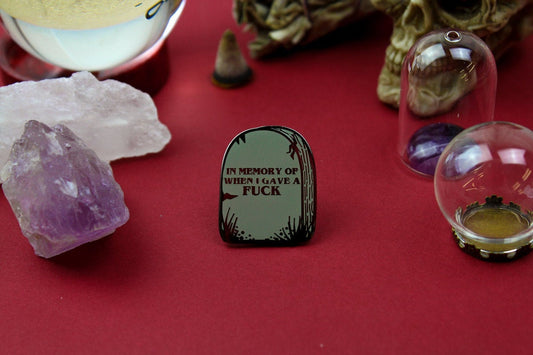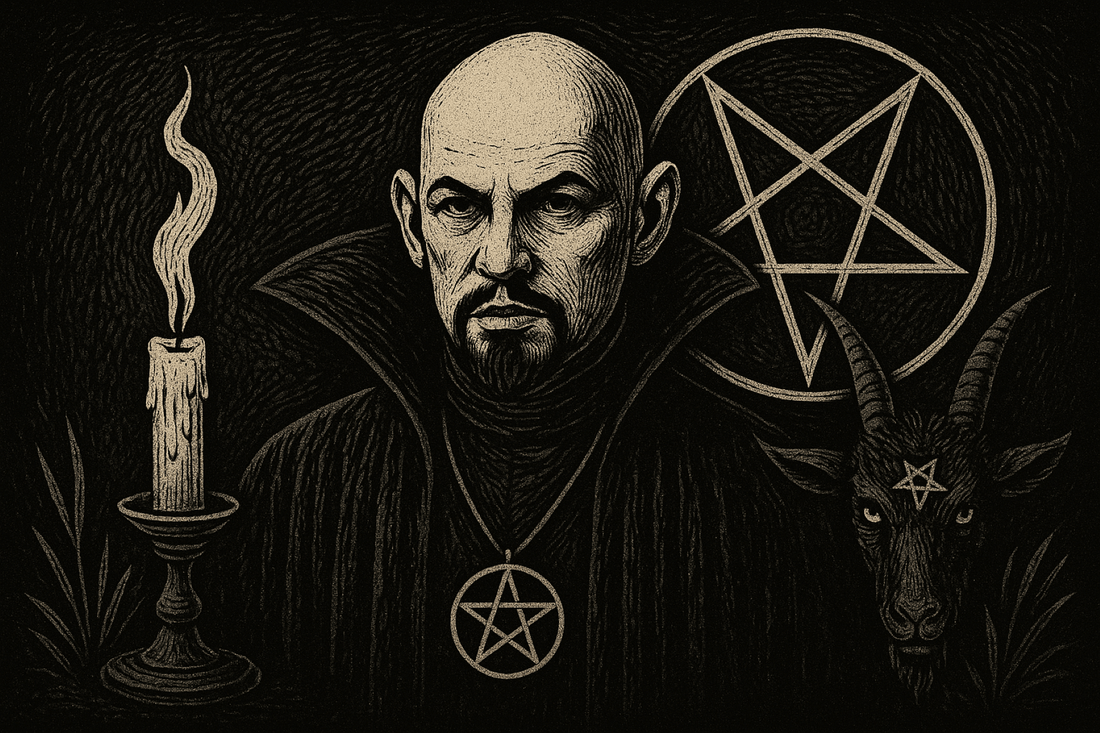
What is the Church of Satan?
Share
The Church of Satan is one of the most widely misunderstood religious organisations in modern history. Despite the name, it has nothing to do with devil worship or supernatural belief. It was founded in 1966 by Anton Szandor LaVey, a former carnival worker and self-styled philosopher who believed mainstream religion was hypocritical and repressive.
Instead of preaching submission to a higher power, the Church promotes individualism, self-interest, and indulgence - not in a chaotic or destructive way, but as a pushback against what LaVey saw as the moral double standards of Christianity. To outsiders, this often looked like provocation for the sake of it. And in many ways, it was.
But behind the black robes, pentagrams and theatrical rituals lies a very structured philosophy. The Church uses “Satan” not as a literal being, but as a symbol of rebellion, pride, and personal freedom. That concept - Satan as the ultimate outsider - is central to everything the Church teaches. Yet because of the imagery and language it borrows, the group has attracted decades of confusion, media sensationalism, and outright hysteria.
Key Points:
- The Church of Satan is an atheistic philosophy, not a cult or belief in a literal devil. It promotes self-empowerment, rational thinking, and personal responsibility.
- Founded in 1966 by Anton LaVey, it uses Satan as a symbol of rebellion against religious hypocrisy and herd mentality.
- It deliberately avoids politics, activism, or community-building - focusing instead on individual strength and merit.
- Misunderstood and often misrepresented, its true message is blunt: think for yourself, live unapologetically, and stop looking for a higher power to blame or follow.
Origins and Founding
The Church of Satan was officially founded on 30th April 1966, a date chosen deliberately to align with Walpurgisnacht, a traditional European night associated with witchcraft and the supernatural. The founder, Anton LaVey, declared it “Year One, Anno Satanas” - the first year of the Age of Satan.
LaVey was a striking figure: bald, goateed, and charismatic, with a background that blended circus performance, police photography, and occult curiosity. He claimed to have seen through the hypocrisy of organised religion early on - noting, for example, how the same people who attended his burlesque shows on Saturday night were piously sitting in church on Sunday morning. His message was simple: if human nature leans toward indulgence, then why not embrace it openly?
This rejection of self-denial became the foundation of LaVeyan Satanism, a philosophy he laid out in The Satanic Bible, published in 1969. Part essay collection, part manifesto, the book explains that Satan is not a literal entity but a symbol of individual strength and freedom. It’s a deliberately provocative rebranding of classic humanist ideas, dressed in black and laced with sarcasm.
In its early years, the Church attracted a bizarre mix of attention seekers, celebrities, and curious thinkers. Jayne Mansfield and Sammy Davis Jr. were both loosely associated with LaVey, though how deep those ties really ran is up for debate. What’s not in question is that LaVey understood publicity - and he used it to cement the Church's image as a theatrical, media-savvy revolt against religious conformity.
While many saw it as a cult or joke, LaVey insisted it was a genuine philosophical movement - just one that happened to speak the language of rebellion.
Philosophy and Beliefs
At its core, the Church of Satan is atheistic. It does not believe in God, the Devil, Heaven, or Hell. There’s no supernatural element to LaVeyan Satanism. Instead, it’s a materialist philosophy rooted in individualism, personal responsibility, and rational self-interest.
The Church uses Satan as a symbol - not a deity. Satan represents pride, defiance, and the pursuit of personal fulfilment. It’s about embracing human nature rather than denying it. Where most traditional religions preach self-sacrifice, Satanism encourages indulgence - within reason, and without harming others. It’s not about chaos. It’s about control.
LaVey summarised the belief system with the Nine Satanic Statements, which open The Satanic Bible. These include lines like “Satan represents indulgence instead of abstinence” and “Satan represents kindness to those who deserve it, instead of love wasted on ingrates.” Each one flips a Christian teaching on its head. They’re blunt, sometimes harsh, but always centred on individual power and survival.
The Church also outlines the Eleven Rules of the Earth, a set of everyday ethics. They read like a mash-up of common sense and street smarts - for example: “Do not make sexual advances unless you are given the mating signal” and “If a guest in your lair annoys you, treat him cruelly and without mercy.” The tone is deliberately confrontational, but the message is consistent: protect your space, respect consent, and don’t be a doormat.
Morality in Satanism isn’t dictated by holy texts or fear of punishment. It’s shaped by reciprocity, merit, and consequence. You’re encouraged to be kind, but not universally. Love, respect, and forgiveness aren’t automatic - they’re earned. That’s the major philosophical break from Christianity, which the Church often critiques as encouraging blind obedience and guilt.
Satanism doesn’t ask its followers to worship anything. It tells them to become their own gods. To take responsibility for their successes and failures. To act with intent, and to live without apology. Whether you find that empowering or ego-driven probably depends on your view of human nature.

By Palnu at English Wikipedia, CC BY-SA 3.0, Link
Rituals and Practices
Despite the dramatic imagery, rituals in the Church of Satan are symbolic, not supernatural. They’re not about summoning spirits or casting spells. They’re more like theatrical psychodrama - designed to help participants channel emotion, confront personal challenges, or celebrate life events.
The most well-known ritual is the Satanic ritual, which can be performed privately or in groups. These are often scripted, filled with gothic language, candles, gongs, and robes - but at their core, they’re psychological tools. Anton LaVey described them as a kind of “emotional catharsis”, a way to focus energy and release inner tension. Think of it as secular theatre with personal stakes.
There are three main types of rituals:
- Lust rituals, to focus desire on a specific person.
- Compassion rituals, to seek emotional or material support for someone (often yourself).
- Destruction rituals, to symbolically cast away an enemy or internal obstacle.
They aren’t meant to produce magic results in a literal sense. They help clarify intentions, boost confidence, and give the participant a feeling of closure or control. For some people, that's enough.
The Church also has specific ceremonies like Satanic weddings, baptisms, and funerals. These follow similar principles - dramatic, personalised, and focused on celebrating the individual. A Satanic wedding, for instance, is centred around mutual respect and passion, not obedience or divine blessing. A funeral praises the life lived, without pretending the dead have moved on to a higher plane.
Crucially, there’s no animal or human sacrifice involved, despite decades of media hysteria saying otherwise. The Church of Satan has repeatedly condemned such acts, both on moral and legal grounds. It views the idea of sacrifice as primitive and unnecessary.
The style is dark, but the structure is clear. These rituals are tools - not magic tricks, not evil rites, and not meant to manipulate nature. They're a way of using drama to affirm personal values in a world that often suppresses them.
Public Perception
From the start, the Church of Satan has been buried under a pile of myths, fearmongering, and sensationalist nonsense. The name alone invites suspicion. Add black robes, upside-down crosses, and dramatic rituals, and you've got the perfect recipe for moral panic - especially in conservative circles.
The worst of it came during the Satanic Panic of the 1980s and early 1990s. Across the US (and to a lesser extent the UK), rumours spread that secret Satanic cults were abusing children, sacrificing animals, and running underground networks of organised evil. None of it was true. Multiple investigations found no credible evidence. But that didn’t stop talk shows, tabloids, and fringe “experts” from whipping the public into hysteria.
The Church of Satan became a scapegoat. Even though its philosophy is non-theistic and doesn’t promote criminal activity, people assumed “Satan” meant violence. It didn’t help that LaVey leaned into the controversy. He enjoyed provoking outrage. Interviews were often theatrical. Quotes were often taken out of context - or flat-out invented.
The reality is that the Church of Satan has always distanced itself from illegal behaviour. It has no connection to ritual abuse cases or any of the wild claims made during the Satanic Panic. In fact, it’s repeatedly spoken out against anyone using Satanism as a cover for criminality. It sees such people as opportunists or lunatics, not genuine adherents.
Another common misconception is that members worship Satan as an actual being. They don’t. The Church is openly atheistic. Satan is used as a symbol of opposition - a kind of mythological mascot for independence, pleasure, and rebellion. But that nuance is often lost on people who only see the name and the pentagram.
Even today, confusion lingers. The rise of The Satanic Temple (a completely separate group with a different focus) has blurred the lines further. People often lump all Satanic groups together, ignoring the major ideological differences between them.
To understand the Church of Satan properly, you have to get past the tabloid nonsense and look at what they actually write and teach. The image might be confrontational, but the message - oddly enough - is often just self-help with a gothic aesthetic.
Cultural Influence
Even if most people don’t understand what the Church of Satan actually teaches, its influence on culture is hard to miss. Since the 1960s, it’s shaped everything from music and film to fashion and satire - often more through imagery than doctrine.
In the 1970s and 80s, LaVey’s black mass theatrics and anti-Christian soundbites made him a media fixture. His shaved head, black robes, and pet lion (yes, really) became part of his brand. Magazines like Look and Newsweek ran features. Talk shows invited him to shock audiences. And shock he did - but always with a smirk. LaVey understood performance; he knew outrage sold.
That same imagery filtered into rock and heavy metal, where bands used Satanic visuals to provoke and entertain. Groups like Black Sabbath, Venom, and later Slayer drew directly from the Church’s aesthetics, even if they didn’t share the actual beliefs. Later, shock artists like Marilyn Manson pushed that line further, often quoting The Satanic Bible in interviews or crediting LaVey as an influence.
Hollywood picked it up too. Satanic symbols became shorthand for rebellion, power, or evil - whether used seriously or as parody. Films like Rosemary’s Baby and The Omen helped cement the association between Satanism and horror, even though they had nothing to do with the Church’s real philosophy. LaVey even consulted on the 1975 film The Devil’s Rain, which featured Ernest Borgnine in goat-faced makeup and a cameo by John Travolta.
Outside entertainment, the Church also had an impact on free speech and outsider identity. By openly rejecting Christian morality, it gave voice to people who felt alienated by mainstream culture. For some, it was a gateway to secularism or alternative spiritualities. For others, it was a way to flip off a system that judged them.
That said, the Church of Satan never pushed for social reform or political recognition. It didn’t ask for religious protections or sue schools over prayer. That’s where it differs sharply from newer groups like The Satanic Temple, which use Satanic imagery to challenge legal and political systems.
The Church’s influence, then, is mostly aesthetic and philosophical - not institutional. It provided the blueprint for Satan-as-symbol, then left people to do what they wanted with it. And plenty did. Even if you’ve never read a word of The Satanic Bible, you’ve probably seen its shadows in music videos, graphic design, or countercultural art.
Whether you see that as meaningful or just marketing depends on your view of modern rebellion. But the Church got there first - and made sure people noticed.

By Eliphas Levi - https://www.flickr.com/photos/olaechea/2920870064/, Public Domain, Link
How It Differs from Other Satanic Groups
The Church of Satan isn’t the only group using Satanic language and symbols - but it is the original. Since the early 2000s, it’s often been confused with The Satanic Temple (TST), a separate organisation with a different philosophy, structure, and purpose. Despite surface similarities, the two groups do not get along.
The Church of Satan, founded in 1966 by Anton LaVey, is apolitical, elitist, and private. It focuses on Satan as a symbol of self-interest, merit, and philosophical rebellion. Members are expected to live successful, independent lives. The Church doesn’t hold public protests or push for legislation. It sees religion as personal, not something to be flaunted in the public square. In their view, activism is beside the point - and often embarrassingly needy.
By contrast, The Satanic Temple, formed in 2013, is activist-driven and politically outspoken. It uses Satanic imagery to challenge religious privilege in public institutions - especially in the United States. Their campaigns include installing Satanic statues alongside Christian monuments, suing over abortion rights, and fighting for the separation of church and state. While they also reject supernatural belief, their focus is on social justice and public visibility, not personal elitism.
There are also key differences in structure. The Church of Satan has a closed hierarchy, where higher ranks are invitation-only and based on proven merit. TST is much more open and decentralised, with local chapters, public events, and a larger online presence. The Church sees this as attention-seeking and unserious. TST, in return, often implies the Church is stuck in the past.
Even their aesthetics are different. The Church of Satan sticks to the classic look: black robes, Baphomet imagery, and LaVeyan language. TST leans into modern design, irony, and often makes a point of looking deliberately ridiculous to highlight hypocrisy in religious law.
There are smaller groups too - splinter factions and independent Satanists - but most fall into either the LaVeyan or TST-inspired camp. The Church of Satan makes no alliances with any of them. It doesn’t speak for all Satanists, and it doesn’t claim to. In fact, it often goes out of its way to separate itself from other groups using the term “Satanic.”
So if you see a Satanist leading a protest or lobbying for legal rights, odds are they’re not from the Church of Satan. If they’re quietly running a business, writing essays, and laughing at the news - they might be.
Criticism and Controversy
The Church of Satan has drawn fire from nearly every angle since the day it was founded. Some of it is based on misunderstanding, some on moral panic, and some on issues the Church itself has invited through its tone, behaviour, and leadership.
One of the most persistent criticisms is that it’s all just theatre. Critics argue that the Church hides behind philosophy while deliberately provoking outrage with shock tactics. Anton LaVey often encouraged this. He played the villain on purpose - giving interviews while stroking a python, posing in coffins, or making outrageous claims just to rile up the media. It worked, but it also blurred the line between belief and performance.
Others have accused the Church of being elitist, arrogant, and exclusionary - which, to be fair, it admits. LaVeyan Satanism celebrates competence, power, and success. It rejects empathy as a universal good. It’s not interested in lifting everyone up. If you’re weak, lazy, or easily offended, the Church isn’t for you - and it doesn’t pretend otherwise. That attitude rubs many people the wrong way, especially in a culture that increasingly values inclusivity and social care.
The Church has also been criticised for its inactivity. While newer Satanic groups take part in politics, charity, and legal battles, the Church of Satan stays silent. It doesn’t campaign. It doesn’t protest. It doesn’t get involved. Some see that as integrity - a refusal to beg the system for attention or rights. Others see it as cowardly or irrelevant. Even within the Satanic community, there’s tension. Members of The Satanic Temple, for instance, often call the Church outdated and self-absorbed.
Anton LaVey himself remains a controversial figure. Some of his personal claims - like working as a crime photographer or having affairs with famous Hollywood actresses - have been challenged or debunked. Critics say he was a showman with a flair for exaggeration, not a serious philosopher. His style was part Nietzsche, part P.T. Barnum. Whether that discredits his ideas is a matter of opinion. It certainly made him one of the most famous satanists in history.
Then there’s the issue of public association. Because of the word “Satan”, the Church continues to face suspicion, censorship, and hostility - especially in religious communities. Members have lost jobs, been refused platforms, or been targeted in conspiracy theories. Even when it’s completely undeserved, the stigma sticks.
Internally, the Church avoids transparency. It doesn’t release membership numbers. It rarely answers critics. It often dismisses questions as ignorant. That can make it hard to evaluate its true size, activity, or relevance in today’s world. But that opacity is part of the design. LaVey didn’t want a mass movement. He wanted a filter - something only the self-selected would bother to understand.
In the end, the Church of Satan was built to challenge people. And challenge almost always leads to controversy. Whether you see that as bold or obnoxious depends largely on how much you value blunt honesty over diplomacy.
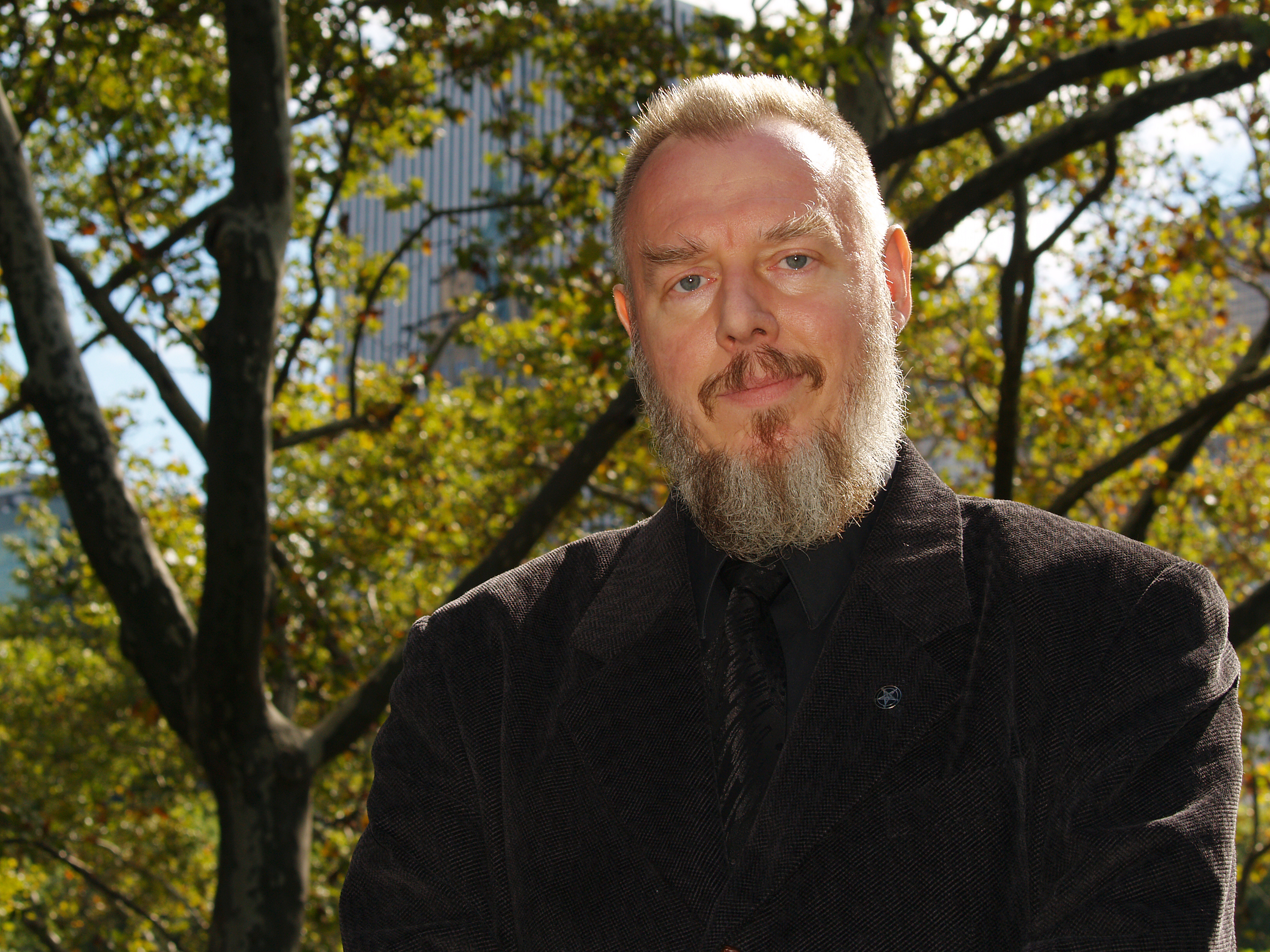
By David Shankbone - Own work, CC BY-SA 3.0, Link
The Church Today
Since Anton LaVey’s death in 1997, the Church of Satan has remained active, but it’s not loud about it. It doesn’t hold rallies, doesn’t post viral videos, and doesn’t try to convert anyone. It’s a private organisation run by a small leadership team who continue to uphold LaVey’s original philosophy without major deviation.
Peter H. Gilmore took over as High Priest and has been the public face of the Church ever since. A long-time member and editor of The Black Flame magazine, Gilmore is more academic and composed than LaVey was - less showman, more essayist. Alongside him is Peggy Nadramia, the High Priestess. Together, they run the organisation from New York.
In the digital age, the Church’s presence is almost entirely online. There are no public temples or regular gatherings. It doesn’t livestream events or organise protests. Instead, it focuses on publishing essays, interviews, and official statements that clarify its views on culture, religion, and society. When it does speak publicly, it tends to be sharp, dismissive, and deliberately unapologetic - in line with its core values.
Membership is still available, but the process hasn’t changed much. A one-time fee for registration, and a more rigorous application if you want to be considered for active membership. There's no community building, no outreach, and no effort to cater to public expectations.
The Church of Satan also continues to distance itself from political movements, including those involving other Satanic organisations. It sees politics as a collective game for herd-minded people. The Church isn’t interested in activism or reform. It encourages its members to work on improving themselves, not the world.
Some critics say this approach has made the Church irrelevant - that in a time of rising authoritarianism, climate crisis, and religious interference in law, its silence looks like complicity. The Church would counter that it was never designed to fight those battles. Its philosophy is internal. It’s about living well, not fighting public wars.
Despite being overshadowed by louder and more media-savvy groups like The Satanic Temple, the Church of Satan still exists - quietly, deliberately, and without compromise. For its members, that’s the point. If you want a support group, look elsewhere. If you want a philosophy that tells you to think for yourself, accept responsibility, and stop making excuses - it’s still there. Just don’t expect it to hold your hand.
